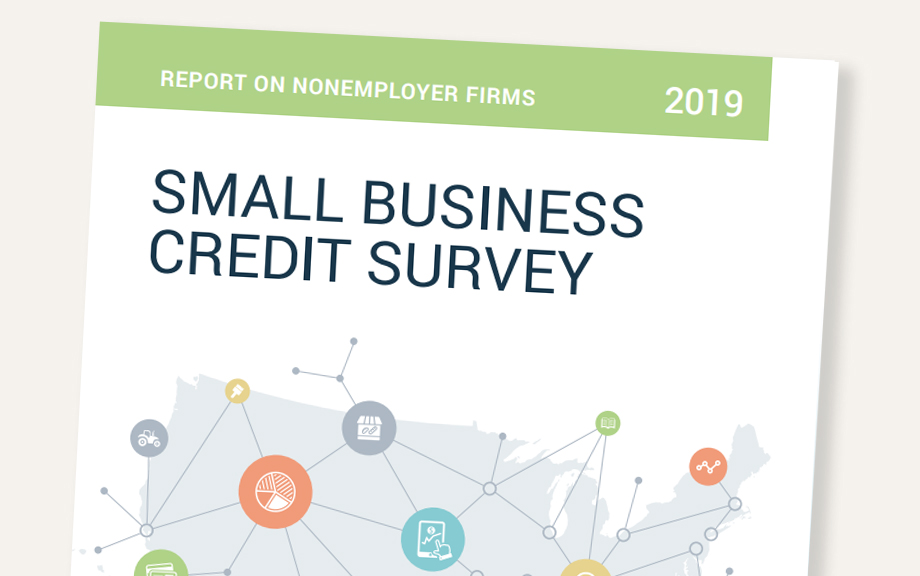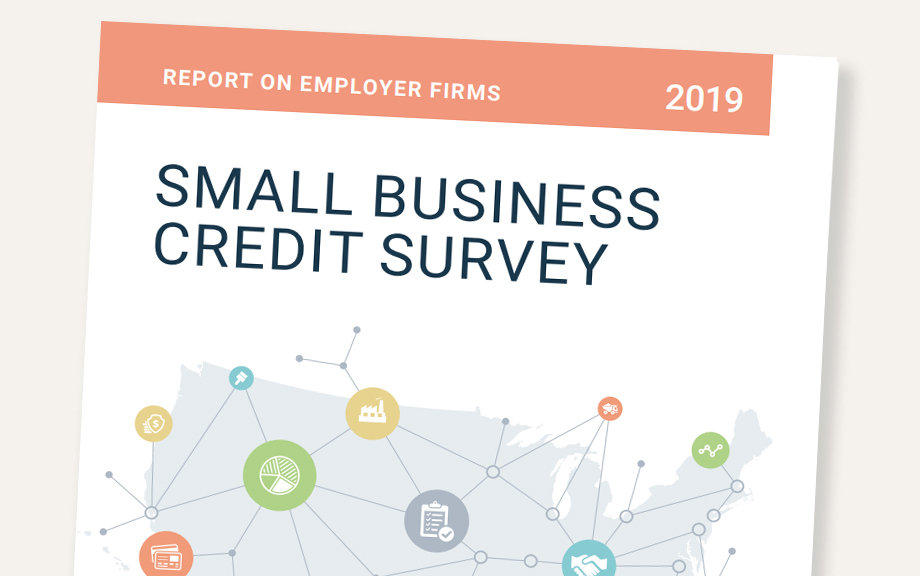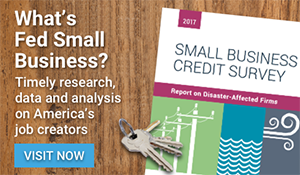Timely information on small business financing needs, decisions and outcomes is critical to understanding and fostering the sector's health and growth. To provide that information to policy makers, researchers and service providers, the Small Business Credit Survey (SBCS) asks small business owners to detail their current business climate, financial needs and recent credit experiences.

Nonemployer firms—establishments without employees on payroll—are a dynamic and growing part of the U.S. economy. While their total economic output may be small, representing three percent of business receipts, the number of nonemployer firms has grown during the last two decades and represents 81 percent of all small businesses. Nonemployer firms are sources of primary and supplemental income for 17 percent of American workers, which underscores the importance of understanding the financial characteristics of these firms and their owners.
In this report, we find that, despite being a key income source for their owners, these firms face acute profitability and financing challenges. Our key findings include:
- Nonemployer firms are an important income source for their owners. Nearly two-thirds of nonemployer firms (63%) serve as the primary source of income for their owner(s).
- One in 5 nonemployer firms was started because the owner lacked other employment options.
- Despite their owners’ reliance on the firm for income, a majority of nonemployer firms are either unprofitable or are operating at break even.
- One in 4 nonemployers anticipates hiring employees in the future.
- Nonemployer firms seeking capital face significant obstacles, with more than half experiencing financing shortfalls.
The 2019 Report on Nonemployer Firms provides an in-depth look at the financial experiences and challenges of nonemployers. Fielded in Q3 and Q4 2018, the survey yielded 5,841 responses from nonemployer firms, businesses in the 50 states and the District of Columbia that have no full- or part-time employees.
The report is a deep-dive into five different categories of nonemployer firms based on the nature of their work, including "supplemental work" where the business is not the owner's primary source of income; “contract work” where firms are working as independent contractors or 1099 workers where the business is the owner's primary source of income and the owner has no plans to hire; "stable nonemployer" where the business is the owner's primary source of income and the owner has no plans to hire; "early-stage potential employer" where the firm is two years or younger with plans to add employees in the next 12 months; and "late-stage potential employer" where the firm is older than two years with plans to add employees in the next 12 months.

The 2019 Report on Employer Firms provides an in-depth look at the business performance and credit outcomes of small businesses with employees and, for the first time, a detailed look at firms that are adding payroll employees and firms that are facing financing gaps. Fielded in Q3 and Q4 2018, the survey yielded 6,614 responses from small employer firms with 1–499 full- or part-time employees (hereafter "firms"), in the 50 states and the District of Columbia.
Small business respondents recounted a strong end to 2018. A majority of small businesses (57%) reported that their firms had experienced revenue growth and more than one-third added employees to their payrolls. The shares of firms with growing revenues and employment represent increases from the 2017 survey; however, the percentage of firms operating at a profit remained unchanged. Looking to 2019, a strong majority of firms expect revenue growth, but the net share of firms that anticipates adding payroll jobs in the next year dipped to 38% from 43% in the prior year's survey.
On the financing front, credit demand held steady in 2018, with 43% of firms seeking external funds for their businesses. Similar to 2017, more than half of firms that sought new funding—53%—experienced a financing shortfall, meaning they obtained less funding than they sought. Applications to online lenders continued to trend upward: 32% of applicants turned to online lenders in 2018, up from 24% in 2017, and 19% in 2016. The growth occurred despite lower applicant satisfaction with online lenders compared to satisfaction levels with large and small banks.
Overall, the survey finds:
- A larger share of firms reported revenue growth (net 35%, up from 28%) and employment growth (net 23%, up from 19%) in 2018 compared to 2017, and 72% of firms expressed optimism for revenue growth in 2019—the same share as in the prior year.
- A vast majority of firms (73%) reported their input costs had increased in the prior 12 months. More than half of these firms raised the prices they charge. Firms that raised their prices were twice as likely to see profitability growth as firms that did not pass on cost increases.
- More than one-third of firms reported adding payroll employees in the prior 12 months. Payroll employment gains were most common at startups, firms with five or more employees, firms with more than $1M in annual revenues, and firms with decision makers younger than 46 years of age.
- The share of firms that expects to hire workers in 2019 (44%) is lower than the share of firms that anticipated employment growth in 2018 (48%). Consistent with prior years' findings, the expectations for growth exceeded actual growth for the period; the 37% of firms that added employees in 2018 fell short of the 48% share that said they had planned to hire in the 2017 survey.
- Year-over-year results showed consistent demand for new financing, with 43% of firms applying for new capital in 2018, in line with 40% in 2017.
- Nearly half of applicants (47%) received the full amount of funding sought, similar to the 2017 survey. Of those that did not apply, roughly half reported they had sufficient financing.
- Among all small businesses—applicants and nonapplicants—the SBCS finds that nearly half (48%) indicated their funding needs are satisfied, 23% have shortfalls, and another 29%, including debt-averse and discouraged firms, may have unmet funding needs.
- Financing shortfalls were particularly pronounced among firms with weak credit profiles, unprofitable firms, younger firms, and firms in urban areas. Funding gaps were most acute for firms seeking $100–$250K.
- Medium- and high-credit-risk applicants seeking loan or line of credit financing were as likely to apply to an online lender as to a large bank (54% and 50%, respectively), and more likely to apply to an online lender than to a small bank (41%), CDFI (5%), or credit union (12%). One in five medium- and high-risk applicants sought financing from other sources, including auto/equipment dealers, private investors, or government entities.











